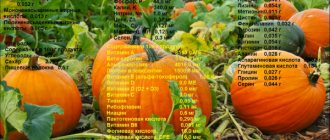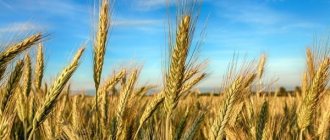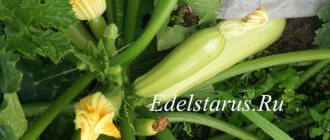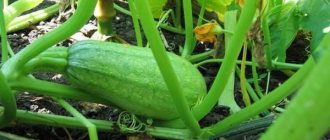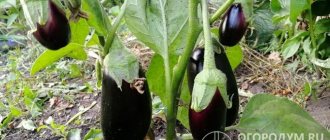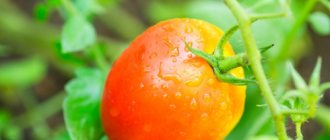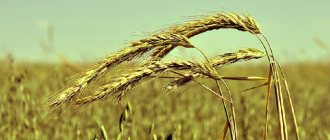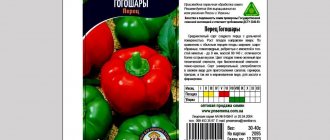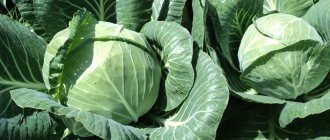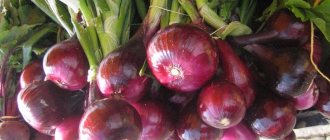Vegetable growing » Pumpkin
3
703
Article rating
Kira Stoletova
There are many legends about this vegetable. The first mention of pumpkin is found in the Bible. These days it is ubiquitous. Both table and fodder pumpkins are unpretentious in cultivation and produce consistently high yields. Both varieties have beneficial properties. The latter is often used as livestock feed, as reflected in its name.
Features of fodder pumpkin
Varieties
Pumpkin is a plant from the pumpkin family, from the herbaceous genus, has up to 30 subspecies. Vegetable fruits with hard skin, juicy pulp, the standard color palette includes yellow, orange, cream or mixed shades of these colors, a wide variety of shapes - from perfectly round to flattened. Scientists have developed a huge number of species and varieties of pumpkin, so gardeners in any region of our country can enjoy this vegetable in their plots.
The most common types of pumpkin include hard-boiled, large-fruited and nutmeg. All of them are used in a wide variety of directions and are divided into fodder, decorative and dining.
It is worth immediately identifying the directions for using pumpkin, its place of application and its intended purpose for the above types. So, the decorative type is used as decoration for garden plots, and occasionally in cooking, since most species of this type have excellent taste. The feed type is actively used in livestock farming for livestock feed. The table type is used in cooking.
Classification
Pumpkin varieties can be classified according to a certain principle or characteristic, this could be:
— ripening period: early, mid- and late-ripening;
- on a territorial basis;
- according to the shape of the plant: bushy, long-climbing, short-climbing;
- by weight: large, medium, small;
— by use: decorative, table, feeding;
— by the content of sugar or other minerals;
- by peel thickness, pulp color, etc.
Butternut squash
They have quite juicy and at the same time fibrous pulp. Their peculiarity is the presence of an interesting aroma similar to a mixture of nuts and pineapple. The color range of the outer shell of the nutmeg pumpkin is very wide, which can change as the fruit grows. The most commonly found colors are orange and beige. The situation is the same with the shape of the pumpkin; all shaped features depend on the specific variety. You can find round, flattened, oval, etc.
The ancestral home of pumpkin is Mexico. It is there that you can meet record holders for the weight of pumpkins, which can grow over a hundredweight. But Mexican pumpkins are famous both for their huge size and taste. They say that the most delicious pumpkins grow in Mexico.
To obtain a mature harvest from garden plots located in mid-Russian latitudes, this plant needs to be given a lot of attention. It is advisable to plant nutmeg pumpkin not with seeds, but with seedlings. Under this condition, the percentage of ripening of the hearths will be significantly higher than that of those plants that grew from seeds directly planted in the ground. Pumpkin loves sunlight and water very much, so it is advisable to plant it in areas that are almost always exposed to sunlight and do not skimp on water when watering. The optimal distance between two pumpkin plants is half a meter or more, as far as the size of the garden plot allows.
Varieties
Variety "Pearl"
the “Vitaminnaya” variety because of its attractive aroma and sweet pulp. These pumpkins have a high percentage of sugar content and juiciness, which comes not only during growth, but also during storage. Experienced gardeners know that in order to preserve a pumpkin longer, it is necessary to tear it off with the stem. “Vitamin” has this name for a reason, as it is rich in vitamins A, C, and microelements - potassium, magnesium and manganese. The color of the fruit is orange with wide green stripes, weighing over 5 kilograms.
“Prikubanskaya” is one of the popular varieties among Russian gardeners. This is a fairly early ripening variety, cylindrical in shape, weighing three to five kilograms.
“Pearl” is one of the largest varieties. Pumpkins ripen at 8-9 kilograms, the flesh is tender, aromatic, dark orange.
variety "MiranidiKiodja"
“Rouge Vif de Tampa” , as the name suggests, French scientists worked on the creation of the variety. This variety is actively used in cooking and for feeding livestock. Pumpkins grow up to two dozen kilograms. Despite the huge size and red external color, inside there is tender, sweet, juicy yellow flesh.
"MiranidiChioggia" was obtained in Italy, which has a corrugated skin with additional ridges. The average fruit size is 10-12 kilograms, with sweet and aromatic orange pulp.
The Melon variety , as the name suggests, has pulp with a melon flavor. The plant itself does not require additional care; it loves a lot of free space where it can freely scatter foliage. The fruits are round, large, several tens of kilograms, yellow in color. It has good yields and a long shelf life.
The Hokkaido variety was developed in Japan. In appearance it is pear-shaped, yellow-orange or reddish in color with small fruits weighing up to two kilograms. It has a sweet taste with chestnut notes.
variety "Hokkaido"
The “Butternut” variety has elongated fruits in the shape of zucchini, so it is classified as a squash type, which is translated from English as “squash” - pumpkin, zucchini. The outer shell is smooth yellow in color, with fibrous orange flesh.
Description of culture
The vegetable plant belonging to the genus Cucurbita has 18 varieties. Of these, only 3 species have nutritional value, the rest can be considered as fodder and ornamental varieties.
The history of the appearance of this plant has very ancient roots. Central America is considered to be the birthplace where pumpkin plants were first cultivated. Moreover, several subspecies were discovered in Africa and Asia Minor.
Pumpkin was brought to Russia in the 19th century. Since that time, the crop began to be considered as a valuable food product. Pumpkin used for food is divided into three types by breeders:
- Hard bark. This species is represented on the vegetable market in dozens of varieties. Among them there are bush-like, climbing and ornamental crops. This category also includes zucchini and squash, the rind of which gains hardness throughout the entire ripening period.
- Large-fruited. Gained popularity all over the world. In Russia, varieties of this species can gain weight up to 60 kilograms, while their sugar content is 15%.
- Nutmeg. Refers to the most delicious varieties. In terms of external characteristics, it is similar to hard-barked and large-fruited plants. However, the nutmeg pulp is not comparable to them: their sugar content reaches 11%, the structure is dense, oily, and the aroma is delicate. This species is represented by many varieties, but for cooking, gardeners give the greatest preference to the pear-shaped variety. In Russia, cold-resistant varieties are grown in which the fruits ripen in 3-4 months.
The nutritional value of pumpkin is due to its rich composition. This culture contains a large amount of pectin. Orange varieties contain more carotene than carrots. The benefits of the vegetable are also explained by the presence of minerals such as phosphorus, potassium, calcium and iron.
The maximum sugar content of the sweetest fruits is 15%. However, you should know that the sugar content is affected by the growing conditions of the plant. The more sun and heat the fruits receive during ripening, the sweeter their pulp becomes.
Pumpkins forage
These pumpkins found their main purpose in livestock farming, where they are actively used as livestock feed. Animals are given both fresh fruits and silage with grain or its waste with the addition of pumpkin pulp. When using such feed, livestock breeders note that the percentage of milk production in cows increases, the fat content in milk increases, and an increase in the reproductive function of animals is also noticeable. The fruits of forage varieties do not have a pronounced aroma, and they are practically unsuitable for culinary art.
Varieties
Variety "Volzhskaya gray-92"
The “Stountovka” variety is high-yielding, with a medium ripening period. It is one of the popular varieties. The dense skin of the fruit allows the fruit not to lose its properties almost the entire winter period and is well transportable over any distance. The fruits are of a standard round-spherical type, with a yellow-orange outer color and a slight gray tint.
The variety “Volzhskaya Seraya-92” was named so for a reason; it grows well in the Volga region and has the most stable immunity to local diseases. High-yielding, large fruits - over two dozen kg. Externally light gray in color, with dense yellow-orange dryish pulp.
Methods of introduction into the diet
Shredded pumpkin
The simplest recipe for animal feed is pumpkin cut into small pieces. This porridge is added to the feeder in large quantities. The maximum daily dose is about 19 kg.
They also mix the puree with legumes: the combination helps to prolong the feeling of fullness in pigs or cattle. Complementary feeding begins at six months of age.
On average, vegetables account for 30% of the diet weight. The weight gain with a balanced diet with the addition of purees is about 900 g per day.
Pumpkin ensiling
Ensilage is a simple process that allows you to preserve useful components for animals in
It is carried out with healthy and affordable ingredients. What to add to silage:
- leaves (tops);
- flour;
- hay;
- legumes
The percentage of the main component must be at least 60. The main raw material is cut or grated, placed in dense containers and closed.
But in the silage the carotene content is reduced to 20 mg. If mixed with legumes, maintain a proportion of 70% legumes and 30% vegetable mass. Such a bookmark must be sealed.
The danger of this method is that if stored improperly, the pumpkin may rot or become moldy. Use only sterile containers and store the product for no more than 2 months.
Other options
To make a pet's diet correct, use boiled, raw and even dry pumpkin. Heat treatment does not affect the composition.
If you plan to fight helminths, use ground seeds. Meal is also useful for prevention.
- Dogs are given pumpkin porridge with rice and herbs.
- Stewed pumpkin with zucchini is suitable for feeding cats.
Dried is added to ready-made food or to porridge during cooking. Frozen pulp does not lose useful components.
Pumpkin powder is a beneficial option for pets who are sick in the winter. It is made from portioned dry pulp, grinding in a coffee grinder. Store in a metal container.
Decorative pumpkins
This is where the widest range of pumpkin shapes and colors is found. Thanks to these qualities, they are extremely popular in gardening. Every gardener will be able to find something to their liking among all this diversity. They are rarely ever used for anything other than decoration or decoration. They are planted along outbuildings or other structures located on the garden plot, such as gazebos or swings, and also as a hedge along the fence, where bright, variedly shaped small pumpkins attract attention, both in summer and winter.
Varieties
The Orange variety has small fruits, up to 300 g, and in appearance they are very similar to oranges due to their round shape and orange color.
variety "Orange"
The “Kroshka Boo” variety has rounded fruits with ridges on the skin, white with splashes or a milky hue.
“Sweet Dumpling” has small fruits, up to 0.5 kg, and an interesting heterogeneous peel color. The main color is yellow, which is complemented by white dots and green stripes.
"Klein Bicolor" has fruits that look like a pear, with a characteristic horizontal division into two colors - yellow and green. Therefore, the variety is popular not only among gardeners, but also among florists.
variety "Dumpling"
“Chalmovidnaya” is the most interesting variety of decorative pumpkins. It is interesting for its diversity not only of shapes and colors, but also of subspecies, which are almost impossible to classify due to the fact that new ones appear every year. Usually they try to classify this variety by the shape of the pumpkin fruit. Of the most common, gardeners distinguish forms similar to tangerine, pear or star.
Decorative varieties do not require special care. In order for pumpkins to delight with their presence on cold autumn days, it is advisable to plant seedlings in open ground in the first days of summer. If the summer period is short, then it is advisable to plant pumpkin seedlings. Decorative pumpkins love frequent loosening of the soil and plenty of water. This type of plant often has a bushy form, but there are also plants with rather long shoots. Such plants are used to decorate or camouflage garden houses and buildings - sheds, swings, fences, etc. Quite frequent branches are significant in weight and require additional support.
Turban gourd
Now let's try to sort the numerous pumpkin varieties according to territorial principle.
Hard-barked varieties
variety "Smile"
They are named so because of the rather hard outer shell of the fruit. Most often these include frost-resistant varieties with early ripening and small fruits. In appearance, such varieties can be recognized by their 5-angled foliage, ribbed stalk and hairy stem. The seeds of these varieties are large, most often having a edging of a different color. The fruits of these varieties are not suitable for long-term storage, but are very suitable for making juices.
Varieties
The “Smile” variety is early ripening with good yield, up to one and a half dozen pumpkins from one small bush. It ripens within 3 months after germination and during the same time the fruits can retain all their properties. Fruits with aromatic, but not juicy pulp, orange in color with brightly visible stripes.
Variety “Orange honey F1” of medium ripening with juicy and honey-tasting pulp. It has strong immunity to fungi and insect pests. The external color is yellow-orange, complemented by green stripes. The fruits are elongated, slightly flattened on top and bottom, grow up to 5 kg, which are stored for a long time and can easily be transported.
Acorn variety
The Acorn variety has a rather interesting fruit shape. Most often they look like an acorn, and they can come in a wide variety of colors, from white to black. The variety is early ripening with yellow and unsweetened pulp.
The “Plyushka” variety is early ripening, distinguished by orange and very sweet pulp. The yield of the variety is higher when using the seedling planting method. The skin of the fruit is often divided into several color segments, which are complemented by white stripes.
Variety "Baby" - the name speaks for itself. It is unpretentious in care and does not take up much space in the garden; it has high yields when grown both in seedlings and without seedlings. Ripens within 75-85 days.
The Gribovskaya bush variety has rounded orange fruits with green stripes, weighing up to five kilograms. The pulp is dense, sweet, orange in color.
Spaghetti variety
The variety "Mozolevskaya" has an orange fruit color with a green-brown pattern. The pulp is sweet and juicy. The average weight of pumpkins is five kilograms.
The Spaghetti variety is an early variety. And the variety got its name because after cooking the pulp falls apart into separate fibers, which can be eaten like the well-known long pasta - spaghetti.
Large-fruited varieties
variety Gribovskaya Winter
As you can easily guess, these varieties include pumpkins, which produce fairly large fruits. But here it is more worth focusing not only on the weight characteristics, but rather on the ratio of the ripe fruit to the size of the adult plant. Typically, such varieties have an excellent predisposition to long-term storage.
Varieties
The “Kroshka” variety is a long-climbing plant with fruits of an average weight of three kilograms. Therefore, calling this variety crumb not only based on external characteristics, but also based on the size of the rounded-flattened fruits is not entirely correct. It is of medium ripening period, the skin of the fruit is grayish in color with bright, but not juicy pulp.
The “Stofuntovaya” variety is late-ripening and has been known among gardeners for quite some time. A distinctive feature is the perfectly symmetrical fruits with glossy, segmented skin. Which can be in a wide range of colors from white to yellow and weigh up to 10 kg. The pulp is not sweet in taste and has a white-yellow color. This variety was previously popular in the northwestern region of the country, as it was practically the only one that produced a mature harvest in late summer or early autumn. Currently, a number of varieties have been created and bred specifically for this region.
Kroshka variety
“Medicinal” refers to early ripening. The fruits have a grayish color with a mesh pattern on the skin.
“Buttery crumpet” loves abundant sunlight and an almost complete absence of wind. It has a sweet taste, which is why it is often eaten fresh without any processing. It differs from other varieties in its distinctive external color, namely turquoise. The fruits are round and ripen quite early. Seeds are planted in the second half of spring immediately in open ground according to the classic planting scheme, more than half a meter between plants and more than a meter between rows of plants.
“Gribovskaya winter” has long, bulging gray fruits with sweet, juicy pulp.
Oreshek variety
“Nut” is early and has good shelf life when stored in a well-ventilated area. The fruit has orange flesh with a large number of seeds. The plant loves organic fertilizers.
“Sweetie” variety is frost-resistant, so it can be found even among Siberian gardeners. For full and rapid growth, the plant must be fed with organic fertilizers. The fruits are round in shape, orange in color, with the skin divided into segments.
The “Zorka” variety ripens 3-3.5 months after the appearance of the first shoots. The external color is unusual and can be orange and gray, less often black with pink dots. The fruits are of a standard rounded-flattened shape, the color of the pulp is also a standard orange color. It is immune to powdery mildew, for this reason it is popular in the northwestern region of Russia.
Sweetie variety
Variety "Cinderella" of medium ripening period. The fruits are large, over 10 kg. Therefore, the plant is quite large in size. The pulp has a non-fibrous structure of a white-cream color. The peel is smooth and slightly segmented. Seedlings are planted in mid-spring, most often in April, and seeds are planted or planted in open ground in late spring or early summer, depending on weather conditions.
Feeding livestock
Due to its high carbohydrate content, pumpkin is used by livestock farmers as winter feed for cows, pigs and sheep. To do this, it is simply cut in half and fed to animals. Cattle happily eat chopped vegetables even when frozen. In heavily chopped form, it is introduced into the winter menu for chickens.
For 2 months, pumpkin is stored fresh in a dry, dark room at a temperature not exceeding 5 °C. To increase the period of its use, silage feed is made from it, along with leaves, legume grass, and waste from grain production. After that, the fodder beets are placed in silo pits.
Efficiency of pumpkin
After introducing feed pumpkin into the diet of farm animals, the following changes are observed:
- dairy products have a pleasant smell, color and contain more carotene than milk from livestock raised on other feed;
- animals have healthy offspring without complications during childbirth;
- the rate of pig weight gain increases significantly;
- the cow's milk supply increases;
- chickens lay eggs more often, and the yolks of the eggs are rich in color.
The introduction of this vegetable into the diet of animals, due to the peculiarities of its chemical composition, improves their absorption of concentrated roughage feed. As a result, fattening occurs more efficiently, which reduces the farmer’s costs.
Siberian and Ural region
Variety Freckle
These areas are important for frost-resistant and early ripening characteristics of vegetables and the presence of stable immunity. Recently, in this climatic zone, only forage varieties were grown that had low palatability and practically no aroma. But thanks to scientific activity, a large number of varieties have now been obtained that meet all climatic requirements and have managed to prove themselves.
Varieties
The “Smile” variety is a decorative species, often used for preparing various dishes. Frost-resistant, with an average ripening period and high yield. The average ripening period is approximately 110-120 days. The fruits are orange in color, weighing about one kilogram, and have good shelf life; pumpkins are perfectly preserved until mid-winter. From one plant, up to two dozen pumpkins are collected, with soft, juicy-sweet pulp. In addition to its vibrant skin color, the variety has prominent foliage with large leaf blades. It is for these characteristics that the variety is widespread among Ural and Siberian gardeners.
“Vesnushka” has proven itself well among gardeners due to its resistance to rapid and significant changes in weather conditions. This variety grows as a small bush with 3-5 shoots, with small distances between adjacent nodes. The fruits for an ornamental variety are quite large and grow up to three kilograms. The outer shell is light green with additional light spots. And inside the pumpkin has soft orange flesh with a characteristic pear aroma.
Due to its high yield, the average of which is 330-350 tons per hectare, this variety is often used not only for decorative purposes, but also for the possibility of long-term storage of fruits. All these characteristics, and especially the plant’s immunity to low temperatures and significant weather changes, are very attractive to gardeners. The most significant disadvantages of this plant include the high probability of powdery mildew appearing on the plant, to combat which it is necessary to use chemical and toxic substances.
Russian variety
“Rossiyanka” is an early variety, which is why we love it among gardeners. With the necessary care, about two tens of kilograms are collected from one plant. The fruits grow 2.5-3.5 kg, the pulp is juicy and has a pronounced melon flavor. The variety is frost-resistant, but it is recommended to grow this variety using seedlings. Which can already be planted in the ground from mid-spring, and in the Vural and Siberian regions not earlier than the beginning of summer, under stable weather conditions. Local gardeners know that there is no need to rush into planting seedlings; it is important to wait for stable weather and make sure that young plants will not die from frost.
This variety does not require special storage conditions; it is enough to store it in a dry, frequently ventilated place.
Hybrids
These varieties are obtained by crossing several varieties of the crop at once. This makes it possible to obtain a plant with higher characteristics.
Advantages of hybrid species:
- the plant produces fruits of approximately the same size;
- the species produces high yields under any conditions;
- hybrids are practically not exposed to diseases and pests;
- self-pollinating.
Among the disadvantages it is worth noting:
- plants are demanding on the mineral composition of the soil;
- Do not over-moisten the soil;
- do not like drought;
- Additional feeding is definitely required.
The territory of central Russia and the Moscow region
variety Healing Medicinal)
All types of pumpkins are grown in this region of Russia. However, here too there are favorites, which are valued both for their strong immunity and high yield.
Varieties
The “Tselebnaya” variety is early ripening and winter-hardy. With juicy pulp and pleasant flavors. Therefore, it is often used to prepare pumpkin puree or juice.
It is grown both in seedlings and without seedlings. To obtain seedlings, seeds are sown in April; at temperatures above +20 °C, seedlings appear within one week. And in May it is planted in open ground. Gardeners recommend hardening off the seedlings a little first; for this, the seedlings are left in the fresh air during the day and brought indoors at night. When grown without seedlings, the seeds are planted in the ground only in late spring or early summer, when the ground has already warmed up, and frosts can be expected forget.
In order to get an early harvest of this variety, it is necessary to fulfill several requirements of this plant. First, you need a piece of land that is exposed to the sun for the longest time. Secondly, you should not plant other vegetables too close to the pumpkin, because it really loves free space. Thirdly, the plant never minds additional fertilizers. Having fulfilled all these requirements, you will be able to harvest an early harvest that can be preserved for up to six months.
variety Gribovskaya Kustovaya
The Gribovskaya variety is loved for its ability to be used in children's and dietary nutrition. The variety has amazing shelf life for up to 1 year, right up to fresh harvest.
Large pumpkins, from five to over a kilogram, grow on elongated vines. The fruits are round, milky in color and have standard orange flesh. The peel is thin, but it tolerates transportation well, even over long distances. Experienced gardeners write that the quality of taste after several months of storage remains the same, and even improves - it becomes sweeter and more aromatic.
“Gribovskaya Kustovaya-189” - the seeds of this pumpkin are planted directly into the ground. According to the recommendations of breeders, it is advisable to do this in late spring. The fruits are oval-elongated, similar to a large egg, only yellow or slightly orange in color. As the ripening process begins, a green pattern appears on the skin. The pulp is sweet and aromatic, of a standard yellow-orange color.
variety Dachnaya
The “Dachnaya” variety is early ripening, with oval fruits that ripen after 65-75 days. It is valued for its high yield and frost resistance. The plants themselves are not demanding, but will appreciate constant loosening of the soil and a large amount of water. The fruits are sweet, light in weight, on average three kilograms. As soon as the ground warms up to +12-14°C, the seeds can be immediately planted in open ground. No preliminary preparation.
Can it be eaten by humans?
Technical varieties can be eaten by both animals and people. But this subspecies is not as tasty as the table variety, but no less healthy. It is better to prepare the pulp before consuming it so that it becomes sweeter and has a pleasant structure:
- To reduce the amount of moisture, the pulp can be boiled and drained in a colander. If you use syrup instead of water, you can increase the sweetness.
- It is better not to use (not consume) forage varieties for dietary nutrition. It will be difficult to accustom a child to tasteless technical grade complementary foods.
- The composition and taste of a vegetable directly depends on its type. Therefore, one should not expect high culinary properties from purely forage crops.
Varieties with high sugar content (sweet varieties)
Atlant variety
The “Kroshka” variety is the earliest among the sweet varieties; it is not named so by chance. A little space for itself in the garden and regular watering is all this plant needs. The harvest of this variety ripens three months after the first shoots. Small pumpkins make life easier for housewives who don’t know what to do with the extra pulp from large fruits.
The largest of the sweet pumpkins are considered to be the Atlant and Big Max . These are pumpkins of enormous mass, late ripening, with sweet pulp and a pronounced aroma. The fruits grow over five tens of kilograms.
These varieties will greatly appreciate the direct rays of the sun in the garden. They are well preserved throughout the winter period, and the pulp becomes even sweeter in winter.
